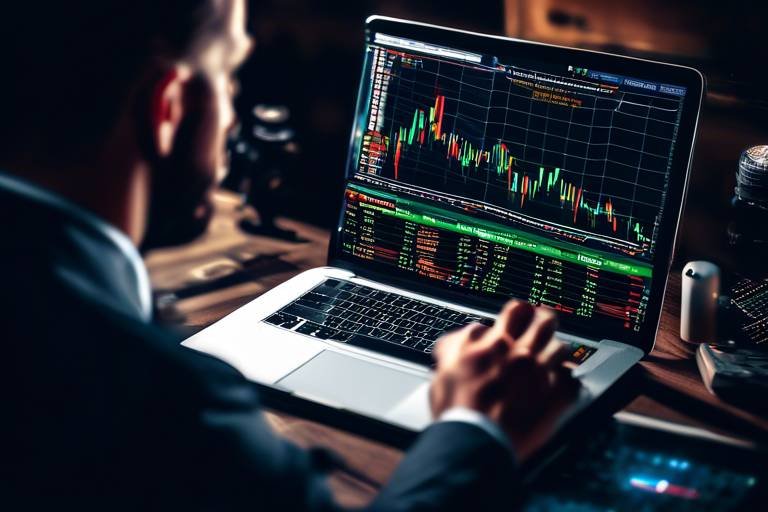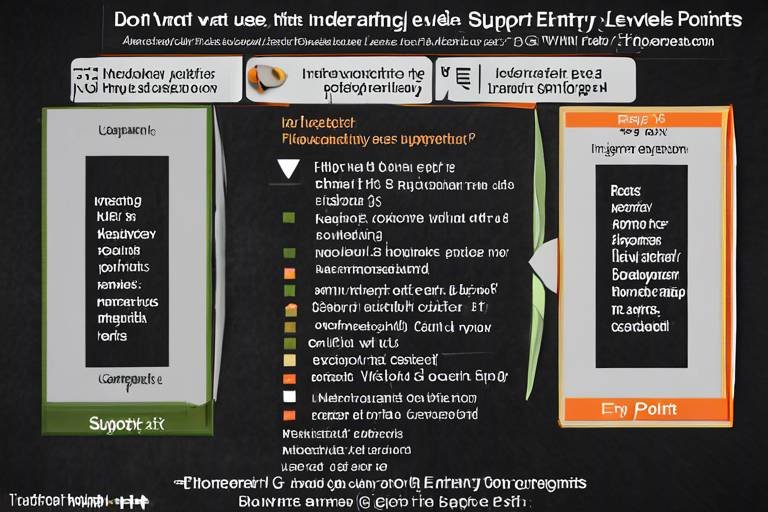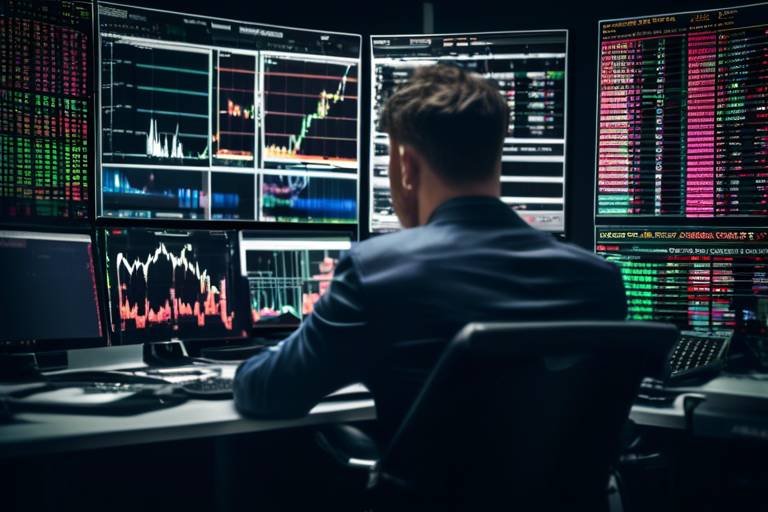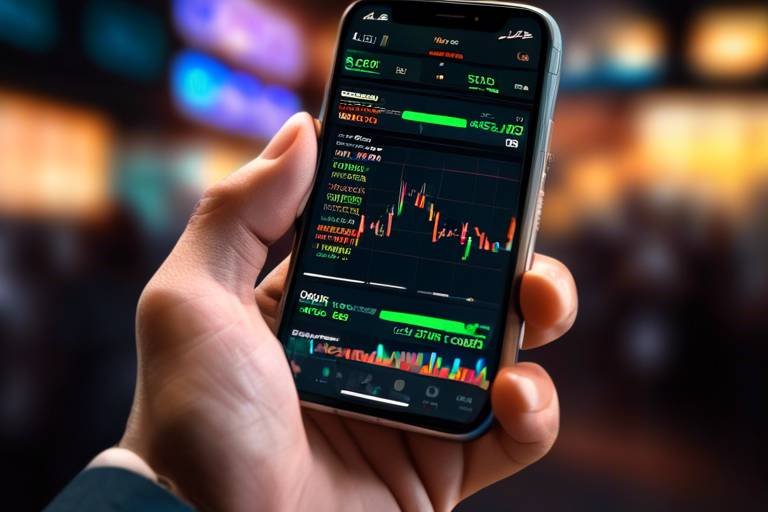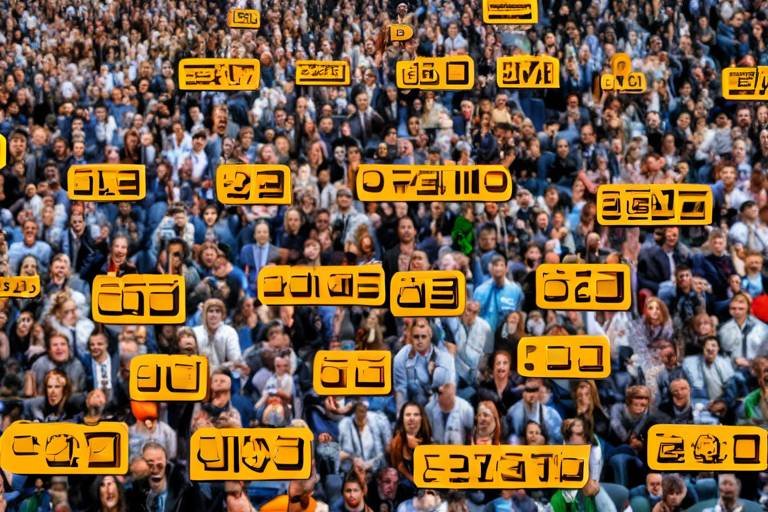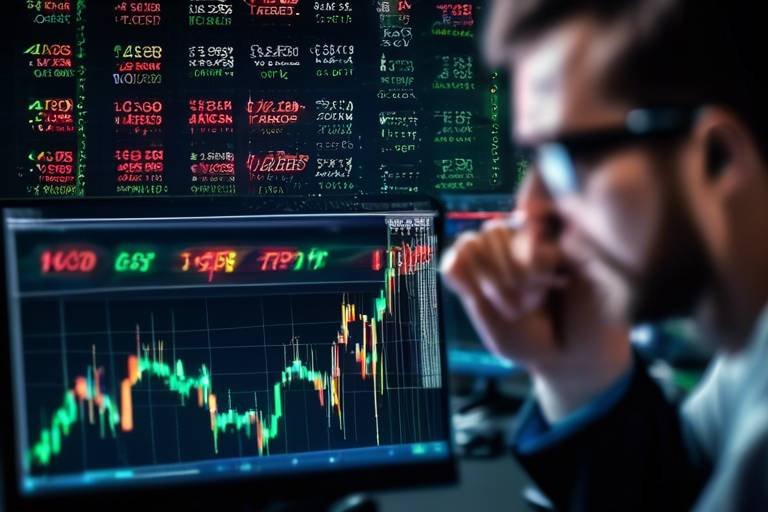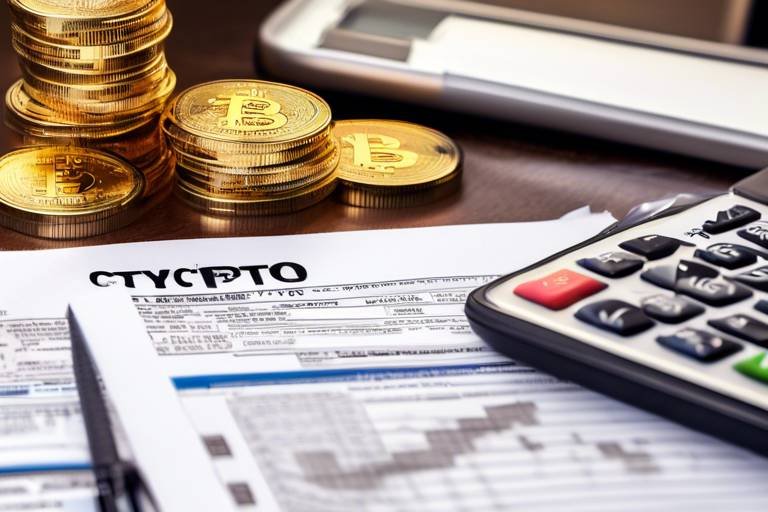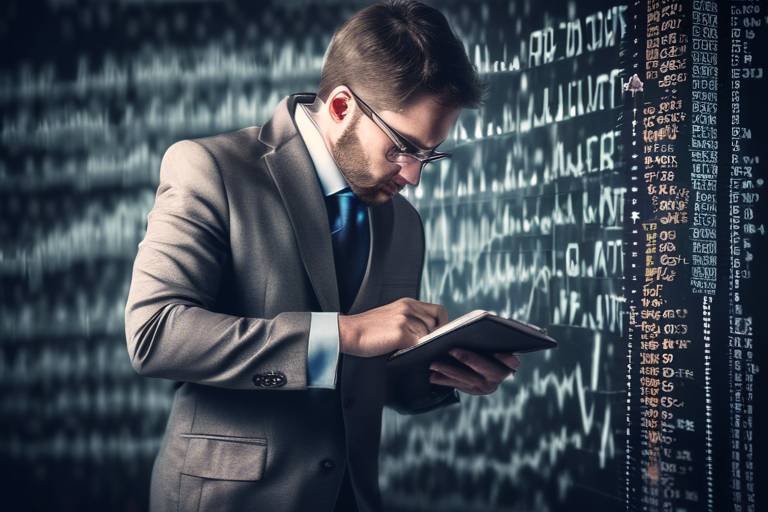Using AI for Predictive Trading Models
In today's fast-paced financial markets, the integration of artificial intelligence (AI) into predictive trading models is not just a trend; it’s a revolution. Imagine having a tool that can analyze massive amounts of data in real-time, learning and adapting to market changes faster than any human trader could. This article explores how AI is reshaping the landscape of trading, offering not only enhanced accuracy in predictions but also unlocking new strategies that were previously unimaginable.
Predictive trading is the art of using historical data to forecast future market movements. With the advent of AI, this practice has evolved significantly. AI enhances the accuracy of these predictions by employing complex algorithms that sift through vast datasets, identifying patterns that might escape the human eye. It's like having a supercharged analytical brain at your disposal, tirelessly working to give you an edge in the market.
As we dive deeper into the role of AI in trading, we’ll uncover how technologies such as machine learning and neural networks are not just buzzwords but essential components that improve decision-making processes. These technologies are capable of learning from past data, making them invaluable in identifying trading opportunities and assessing risks.
But it's not all sunshine and rainbows. The implementation of AI in trading comes with its own set of challenges. From ensuring data quality to navigating the complex landscape of regulatory compliance, traders must be prepared to tackle these hurdles head-on. However, the potential benefits far outweigh these challenges, paving the way for a future where AI-driven trading is the norm.
In this article, we will explore the various dimensions of AI in predictive trading models, examining everything from the algorithms that power these systems to the ethical considerations that arise as we move forward. Buckle up as we embark on this exciting journey into the future of trading!
- What is predictive trading? Predictive trading involves using historical data to forecast future market trends and make informed trading decisions.
- How does AI improve predictive trading? AI enhances predictive trading by analyzing vast datasets quickly and accurately, identifying patterns and trends that human traders might miss.
- What are the main challenges of implementing AI in trading? Key challenges include data quality issues, regulatory compliance, and the need for robust technological infrastructure.
- Will AI replace human traders? While AI can significantly enhance trading strategies, it is more likely to serve as a tool that complements human decision-making rather than completely replacing it.

Understanding Predictive Trading
Predictive trading is a fascinating concept that revolves around the ability to forecast market trends by analyzing historical data. Imagine trying to predict the weather; just as meteorologists use past weather patterns to forecast future conditions, traders use historical market data to anticipate price movements. This practice is not just a shot in the dark; it’s a systematic approach that combines data analysis with financial theory to identify potential trading opportunities. With the rise of technology and data analytics, the significance of predictive trading has skyrocketed, making it a cornerstone of modern trading strategies.
At its core, predictive trading relies heavily on the collection and analysis of vast amounts of data. Traders look at various factors, including price movements, trading volume, and market sentiment, to build models that can predict future price actions. The integration of artificial intelligence (AI) into this process has taken predictive trading to new heights. AI enhances the accuracy of these predictions by processing and analyzing data at a speed and precision that human analysts simply cannot match. This synergy between data and technology is what makes predictive trading an indispensable tool in today's fast-paced financial markets.
One of the key advantages of predictive trading is its ability to reduce uncertainty. By leveraging historical data and AI algorithms, traders can make more informed decisions. This is akin to having a compass while navigating through a dense fog; it provides direction and clarity in an otherwise murky environment. However, it’s essential to note that while predictive models can significantly improve decision-making, they are not foolproof. Market conditions can change rapidly, and unexpected events can disrupt even the most sophisticated models.
Moreover, the effectiveness of predictive trading is heavily reliant on the quality of data used. Poor-quality data can lead to inaccurate predictions, which can be detrimental to trading strategies. Therefore, ensuring data integrity is crucial. Traders often employ various techniques to cleanse and validate their data before it is fed into predictive models. This process is similar to a chef selecting only the freshest ingredients for a gourmet meal; the outcome is only as good as the components that go into it.
In summary, understanding predictive trading involves recognizing its reliance on historical data analysis, the transformative role of AI, and the importance of data quality. As we delve deeper into the role of AI in trading, we will uncover how these technologies are not just enhancing predictive models but also reshaping the entire landscape of financial trading.
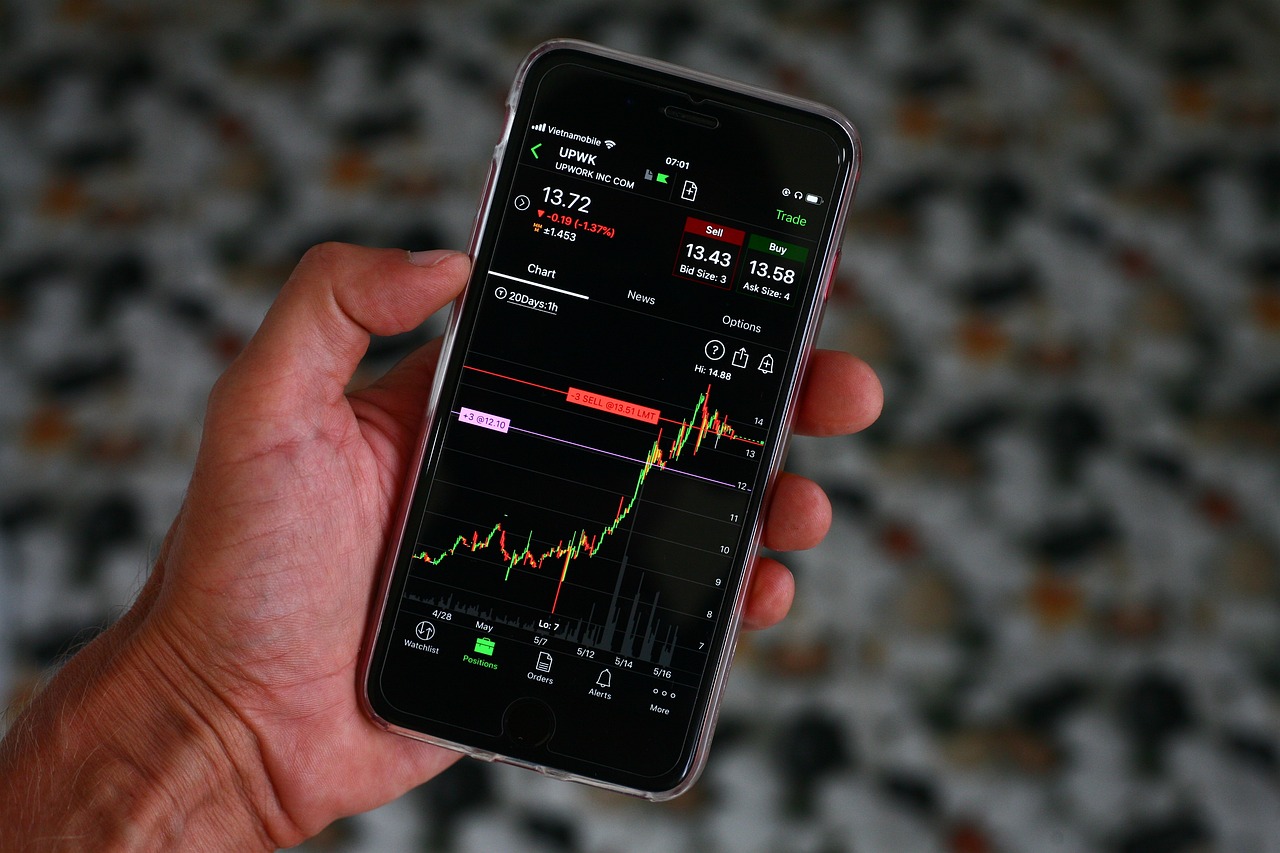
Role of AI in Trading
Artificial Intelligence (AI) has become a game-changer in the trading world, revolutionizing how traders analyze data and make decisions. Imagine having a super-smart assistant that can sift through mountains of data in the blink of an eye, spotting trends and opportunities that a human might miss. That's precisely what AI brings to the table. By utilizing advanced technologies like machine learning and neural networks, AI enhances the trading process, making it more efficient and effective.
One of the most significant contributions of AI in trading is its ability to analyze vast datasets at incredible speeds. Traditional trading methods often rely on human intuition and experience, which, while valuable, can be limited by cognitive biases and emotional decision-making. AI, on the other hand, processes data without these biases, enabling it to deliver insights that are purely based on factual information. This leads to more informed trading decisions and potentially higher returns.
Moreover, AI models can continuously learn and adapt to new data. This adaptive learning means that as the market evolves, so do the models. They can identify new patterns and trends that may not have been apparent before, allowing traders to stay ahead of the curve. For instance, AI can analyze historical data to determine how certain events impact market movements, providing traders with a predictive edge.
To illustrate the role of AI in trading, consider the following table that highlights some key AI technologies and their applications:
| AI Technology | Application in Trading |
|---|---|
| Machine Learning | Predictive analytics for market trends |
| Neural Networks | Complex data pattern recognition |
| Natural Language Processing (NLP) | Sentiment analysis from news and social media |
| Robotic Process Automation (RPA) | Automating routine trading tasks |
In addition to enhancing decision-making, AI also plays a crucial role in risk management. By analyzing historical data and current market conditions, AI can identify potential risks much earlier than traditional methods. This proactive approach enables traders to implement strategies to mitigate these risks before they escalate. For instance, AI can detect unusual trading patterns that may indicate market manipulation or an impending downturn, allowing traders to adjust their strategies accordingly.
As we delve deeper into the role of AI in trading, it's essential to recognize its transformative potential. The integration of AI technologies not only streamlines trading processes but also democratizes access to sophisticated trading strategies. Even smaller traders can leverage AI tools that were once exclusive to large financial institutions, leveling the playing field.
In summary, the role of AI in trading is multifaceted and powerful. It enhances decision-making through data-driven insights, improves risk management, and democratizes access to advanced trading strategies. As technology continues to advance, the influence of AI on trading practices will only grow, paving the way for a more efficient and transparent financial market.
- What is predictive trading? Predictive trading uses historical data to forecast future market trends, enabling traders to make informed decisions.
- How does AI improve trading accuracy? AI analyzes vast amounts of data quickly and without bias, leading to more accurate predictions and better trading outcomes.
- What are the challenges of implementing AI in trading? Challenges include data quality issues, regulatory compliance, and the need for skilled professionals to manage AI systems.
- Can AI be used by individual traders? Yes, many AI tools are now accessible to individual traders, allowing them to leverage advanced analytics without requiring extensive resources.

Machine Learning Algorithms
Machine learning algorithms are the backbone of modern predictive trading models, acting as the sophisticated engines that drive decision-making in the financial markets. These algorithms analyze vast amounts of historical and real-time data, enabling traders to identify patterns and make informed predictions about future price movements. Imagine trying to find a needle in a haystack; without the right tools, it would be nearly impossible. Similarly, machine learning algorithms sift through mountains of data, pinpointing the most relevant information that can lead to profitable trading opportunities.
There are several types of machine learning algorithms that traders commonly use, each with its own strengths and weaknesses. Here are a few of the most notable:
- Linear Regression: This algorithm is used to predict a target variable by establishing a linear relationship between input features. It's particularly useful for forecasting prices based on historical trends.
- Decision Trees: These algorithms break down data into smaller subsets while developing an associated decision tree. They are intuitive and help visualize trading decisions.
- Support Vector Machines (SVM): SVMs are effective in classification problems, helping traders determine whether to buy or sell based on the data's positioning in a multidimensional space.
- Random Forests: This ensemble learning method uses multiple decision trees to improve prediction accuracy and reduce the risk of overfitting.
Each of these algorithms comes with its own set of applications in trading. For example, linear regression can be used to predict stock prices based on historical data, while decision trees can help traders decide the best time to enter or exit a position. The choice of algorithm often depends on the specific trading strategy and the type of data being analyzed.
Moreover, the effectiveness of these machine learning algorithms in trading is significantly enhanced through feature engineering—an essential process where traders select and modify input variables to improve model performance. Think of it as preparing a gourmet meal; the quality of the ingredients (data features) directly affects the final dish (trading predictions). By carefully selecting the right features, traders can boost the accuracy of their models and gain a competitive edge in the market.
However, it’s crucial to remember that while machine learning algorithms can provide valuable insights, they are not foolproof. The financial markets are inherently unpredictable, and relying solely on these models without human intuition and experience can lead to significant losses. Therefore, a balanced approach that combines algorithmic predictions with trader expertise is often the most effective strategy.
In summary, machine learning algorithms play a pivotal role in developing predictive trading models. They empower traders to make data-driven decisions, ultimately leading to enhanced profitability. As technology continues to evolve, the integration of more advanced algorithms will undoubtedly shape the future of trading, making it an exciting field to watch.

Supervised Learning Techniques
Supervised learning techniques are at the forefront of predictive trading models, acting as a guiding star in the chaotic universe of financial markets. By utilizing labeled datasets, these techniques allow algorithms to learn from historical data and make informed predictions about future price movements. Imagine teaching a child to recognize animals by showing them pictures and telling them the names; similarly, supervised learning trains machines to identify patterns and trends based on past data.
One of the most significant advantages of supervised learning in trading is its ability to enhance the accuracy of predictions. Traders can leverage various algorithms such as linear regression, decision trees, and support vector machines to create models that predict stock prices, identify buy/sell signals, and even forecast market volatility. For instance, a decision tree can segment the data into branches, leading to clear outcomes based on specific conditions, which is particularly useful in making trading decisions.
Moreover, supervised learning techniques can be categorized into two main types: classification and regression. Classification algorithms are used when the outcome is categorical, such as predicting whether a stock will go up or down. In contrast, regression algorithms are employed when the outcome is continuous, like estimating the future price of a stock. The choice of technique largely depends on the specific trading strategy and the nature of the data being analyzed.
To illustrate the effectiveness of supervised learning, consider the following table that compares different algorithms and their applications in trading:
| Algorithm | Type | Application in Trading |
|---|---|---|
| Linear Regression | Regression | Predicting future stock prices based on historical data |
| Decision Trees | Classification | Identifying buy/sell signals based on market conditions |
| Support Vector Machines | Classification | Classifying stocks into different categories for trading strategies |
However, it's essential to remember that while supervised learning techniques can significantly improve trading strategies, they are not foolproof. The quality of the labeled data plays a crucial role in the effectiveness of these models. Poor-quality data can lead to inaccurate predictions, which can be detrimental in the fast-paced world of trading. Therefore, ensuring that the data used for training is accurate, relevant, and comprehensive is vital for success.
In summary, supervised learning techniques offer a powerful toolkit for traders looking to enhance their predictive models. By leveraging these techniques, traders can make data-driven decisions that improve their chances of success in the market. As the financial landscape continues to evolve, embracing these advanced methodologies will be key to staying ahead of the curve.
- What is supervised learning in trading? Supervised learning in trading involves training algorithms on labeled datasets to predict future market trends and make informed trading decisions.
- How does supervised learning enhance trading strategies? It enhances trading strategies by providing accurate predictions based on historical data, allowing traders to make data-driven decisions.
- What are some common supervised learning algorithms used in trading? Common algorithms include linear regression, decision trees, and support vector machines, each serving different purposes based on the data type.
- What challenges are associated with supervised learning in trading? The main challenges include data quality issues and the need for extensive labeled datasets, which can be time-consuming and expensive to obtain.
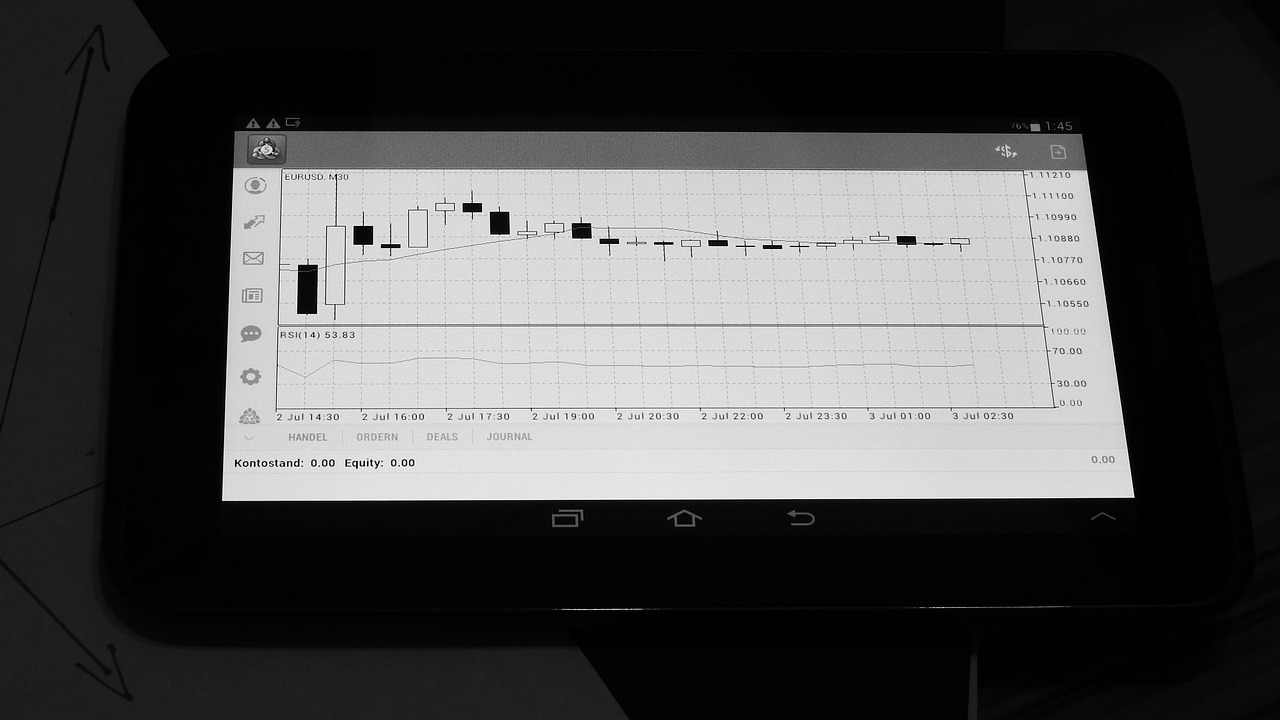
Unsupervised Learning Applications
Unsupervised learning is a fascinating area of artificial intelligence that allows algorithms to identify patterns and structures in data without any prior labeling. In the realm of predictive trading, the applications of unsupervised learning are both diverse and impactful. By sifting through vast amounts of unstructured data, traders can uncover hidden insights that traditional methods might overlook. Imagine trying to find a needle in a haystack; unsupervised learning is like having a magnet that helps you draw out those needles with ease.
One of the most significant applications of unsupervised learning in trading is in the detection of market anomalies. By analyzing patterns in price movements and trading volumes, algorithms can flag unusual behaviors that may indicate potential trading opportunities or risks. For instance, if a stock suddenly spikes in volume without any apparent news, an unsupervised learning model can alert traders to investigate further. This capability is akin to having a sixth sense for market movements, providing traders with a competitive edge.
Additionally, unsupervised learning can facilitate clustering, which groups similar data points together. This technique can help traders identify various market segments or categorize different assets based on their performance characteristics. For example, a trader might use clustering to group stocks that have similar volatility profiles, allowing for more tailored trading strategies. The ability to segment data in this way can lead to more informed decisions and optimized trading portfolios.
Another exciting application is dimensionality reduction, which simplifies complex datasets while retaining essential information. Techniques like Principal Component Analysis (PCA) can help traders visualize and interpret high-dimensional data, making it easier to spot trends and correlations. This simplification is crucial when dealing with the overwhelming amount of data generated in today's financial markets. By reducing complexity, traders can focus on the most relevant factors influencing their trading strategies.
In conclusion, the applications of unsupervised learning in predictive trading models are transformative. From anomaly detection to clustering and dimensionality reduction, these techniques empower traders to make data-driven decisions with greater accuracy and confidence. As technology continues to evolve, the integration of unsupervised learning into trading strategies will likely become more prevalent, reshaping the financial landscape in ways we are only beginning to understand.
- What is unsupervised learning?
Unsupervised learning is a type of machine learning that analyzes and interprets unlabeled data to discover patterns or groupings without human intervention.
- How does unsupervised learning benefit trading?
It helps traders identify market anomalies, cluster similar assets, and reduce data complexity, leading to more informed trading decisions.
- Can unsupervised learning predict market trends?
While it may not predict trends directly, it can uncover underlying patterns that inform trading strategies and improve decision-making.

Neural Networks in Trading
Neural networks are a fascinating aspect of artificial intelligence that have made significant waves in the world of trading. Imagine a complex web of interconnected nodes, much like the neurons in our brains, working tirelessly to analyze vast amounts of data. This architecture allows neural networks to learn from historical trading patterns and market behaviors, making them exceptionally powerful tools for predictive trading models.
At the core of neural networks is their ability to process information in layers. Each layer extracts features from the input data, allowing the model to identify complex patterns that might be missed by traditional algorithms. For instance, while a simple algorithm might look at price movements over a few days, a neural network can consider a multitude of factors, including trading volume, market sentiment, and even external economic indicators, all at once.
One of the most compelling advantages of using neural networks in trading is their adaptability. As market conditions change, these models can be retrained with new data, ensuring that they remain relevant and accurate. This flexibility is crucial in the fast-paced world of finance, where being a step ahead can make all the difference between profit and loss.
To better understand how neural networks operate in trading, let’s break down their architecture:
| Layer Type | Description |
|---|---|
| Input Layer | Receives the initial data (e.g., historical prices, volume). |
| Hidden Layers | Processes the data through multiple transformations to learn patterns. |
| Output Layer | Produces the final prediction (e.g., buy/sell signals). |
Neural networks also excel in feature extraction, which is the process of identifying the most relevant variables that influence market movements. This capability is particularly beneficial in high-frequency trading, where the speed of execution is critical. By utilizing neural networks, traders can develop models that automatically adjust to new information, enhancing their decision-making processes.
However, it's important to note that while neural networks are powerful, they are not without their challenges. The complexity of these models can lead to issues such as overfitting, where a model performs well on training data but poorly on unseen data. Therefore, traders must strike a balance between model complexity and generalizability to ensure robust predictions.
In conclusion, the integration of neural networks into trading strategies represents a significant leap forward in predictive modeling. Their ability to learn from data, adapt to changes, and identify complex patterns positions them as invaluable assets in the trading toolkit. As technology continues to evolve, the potential for neural networks in trading is bound to expand, opening new avenues for traders to explore and conquer.
- What are neural networks? Neural networks are AI models designed to simulate the way human brains process information, allowing them to learn from data and make predictions.
- How do neural networks improve trading? They analyze vast datasets, identify complex patterns, and adapt to new information, providing traders with better insights and predictions.
- What are the challenges of using neural networks in trading? Challenges include the risk of overfitting, the need for high-quality data, and the complexity of model training and interpretation.

Benefits of AI in Predictive Trading
Artificial Intelligence (AI) is transforming the world of finance, particularly in the realm of predictive trading. The integration of AI technologies brings a multitude of benefits that can significantly enhance trading strategies and outcomes. One of the most compelling advantages is the **improved accuracy** of predictions. AI systems analyze vast amounts of historical data and identify patterns that may not be immediately visible to human traders. This capability allows for more precise forecasting of market trends, leading to better investment decisions.
Moreover, the **speed** at which AI processes information is unparalleled. Traditional trading strategies often rely on human intuition and manual analysis, which can be slow and prone to errors. In contrast, AI algorithms can swiftly analyze real-time data, enabling traders to react promptly to market changes. This speed not only enhances decision-making but also allows traders to capitalize on fleeting opportunities that human traders might miss.
Another significant benefit of AI in predictive trading is its ability to enhance **efficiency**. AI systems can execute trades automatically based on predefined criteria, reducing the time spent on routine tasks. This automation frees up traders to focus on more strategic aspects of trading, such as developing new strategies or exploring emerging markets. Additionally, AI can help optimize trading strategies by continuously learning from new data, ensuring that the models remain relevant and effective.
To illustrate the benefits of AI in predictive trading, consider the following table that highlights key advantages:
| Benefit | Description |
|---|---|
| Improved Accuracy | AI analyzes historical data to identify trends, leading to better market predictions. |
| Increased Speed | AI processes data in real-time, allowing for quick reactions to market fluctuations. |
| Enhanced Efficiency | Automation of trades reduces manual workload and optimizes trading strategies. |
Furthermore, AI enhances **decision-making** by providing data-driven insights. Traders can leverage AI-generated predictions to make informed choices, minimizing the reliance on gut feelings and emotional trading. With AI, traders can evaluate a plethora of factors, such as market sentiment, economic indicators, and geopolitical events, all of which play a critical role in market movements. This comprehensive analysis leads to more robust trading strategies.
In addition to decision-making, AI plays a vital role in **risk management**. Effective risk management is crucial in trading, as it helps protect investments from significant losses. AI systems can identify potential risks by analyzing historical data and current market conditions. For instance, they can highlight unusual trading patterns or sudden market shifts that may indicate increased volatility. By being alerted to these risks, traders can adjust their strategies accordingly, ensuring they are better prepared for unforeseen market events.
In summary, the benefits of AI in predictive trading are vast and transformative. From improved accuracy and speed to enhanced efficiency and decision-making, AI is reshaping how traders approach the market. As technology continues to advance, we can expect even more sophisticated tools that will further empower traders to navigate the complexities of the financial landscape.
- What is predictive trading? Predictive trading involves using historical data and algorithms to forecast future market trends.
- How does AI improve trading accuracy? AI analyzes large datasets to identify patterns and trends that enhance the accuracy of predictions.
- Can AI help with risk management in trading? Yes, AI can identify potential risks and suggest strategies to mitigate them, improving overall risk management.
- What are the main challenges of implementing AI in trading? Challenges include data quality issues and regulatory compliance concerns.

Enhanced Decision-Making
In the fast-paced world of trading, the ability to make swift and informed decisions can mean the difference between profit and loss. With the integration of artificial intelligence (AI), traders now have access to advanced tools that significantly enhance their decision-making capabilities. Imagine having a personal assistant that can sift through mountains of data, analyze patterns, and provide actionable insights in real-time. That’s precisely what AI brings to the table.
AI algorithms are designed to analyze vast datasets, identifying trends that might be invisible to the naked eye. For instance, machine learning models can process historical trading data, economic indicators, and even social media sentiment to predict market movements. This comprehensive analysis allows traders to make decisions based on data-driven insights, rather than gut feelings or outdated information. As a result, traders can capitalize on opportunities more effectively and mitigate potential losses.
Furthermore, AI can assist in developing a robust trading strategy by evaluating various scenarios and outcomes. By simulating different market conditions, AI can help traders understand the potential impact of their decisions. This not only boosts confidence but also enhances accountability, as traders can back their choices with solid data. For example, a trader might use AI to assess the potential risks and rewards of entering a specific trade, leading to more calculated and strategic decisions.
To illustrate the power of AI in enhancing decision-making, consider the following table that outlines the key advantages:
| Advantage | Description |
|---|---|
| Speed | AI can analyze data and generate predictions in seconds, allowing traders to act quickly. |
| Accuracy | Advanced algorithms improve the precision of market forecasts, reducing the likelihood of errors. |
| Data Integration | AI can process information from multiple sources, providing a holistic view of the market. |
| Continuous Learning | Machine learning models adapt over time, improving their predictions as new data becomes available. |
Moreover, the predictive capabilities of AI extend beyond mere forecasting. Traders can leverage AI to develop personalized trading strategies tailored to their unique risk tolerance and investment goals. This customization is essential, as every trader has different preferences and approaches to the market. By utilizing AI, traders can refine their strategies and enhance their overall performance.
In conclusion, the integration of AI into trading not only streamlines the decision-making process but also empowers traders with the tools they need to navigate the complexities of the market. As AI technology continues to evolve, we can expect even more sophisticated models that will further enhance trading strategies, making informed decision-making a standard practice in the financial landscape.
- What is AI's role in trading?
AI helps traders analyze large datasets, predict market trends, and make informed decisions quickly. - How does AI improve decision-making?
AI provides data-driven insights, enhances accuracy, and allows for personalized trading strategies. - Can AI replace human traders?
While AI can augment trading capabilities, human intuition and experience remain invaluable in the trading process. - What are the risks of using AI in trading?
Data quality and regulatory compliance are significant concerns that traders must address when implementing AI solutions.

Risk Management Strategies
In the fast-paced world of trading, effective risk management is not just a safety net; it's a critical component that can make or break a trader's success. With the integration of artificial intelligence (AI), the landscape of risk management is evolving, offering traders innovative tools and strategies to navigate market uncertainties. But what exactly does this mean for traders? Let’s dive deeper into how AI can transform risk management.
One of the most significant advantages of incorporating AI into risk management is its ability to analyze vast amounts of data quickly. Traditional methods often rely on historical data and human intuition, which can lead to oversights and delays. However, AI algorithms can sift through massive datasets in real-time, identifying potential risks before they escalate. For instance, an AI model can detect unusual trading patterns or market fluctuations that may indicate a looming crisis, allowing traders to react swiftly.
Moreover, AI enhances risk assessment through predictive analytics. By utilizing machine learning algorithms, traders can forecast potential market movements based on historical trends and current data. This predictive capability empowers traders to make informed decisions, adjusting their strategies to mitigate risks. For example, if an AI model predicts a downturn in a particular asset, traders can either hedge their positions or reduce their exposure, minimizing potential losses.
Another critical aspect of AI in risk management is its ability to automate risk monitoring. Imagine having a dedicated assistant that continuously scans the market for risks while you focus on strategizing. AI can automate the monitoring process, providing alerts and insights when predefined risk thresholds are breached. This not only saves time but also enhances the trader's ability to respond to risks proactively.
However, it’s essential to recognize that while AI offers powerful tools for risk management, it is not foolproof. Traders must remain vigilant and ensure that their AI systems are trained on high-quality, relevant data. Poor data quality can lead to inaccurate predictions and misguided strategies. Therefore, establishing a robust data governance framework is crucial for effective AI-driven risk management.
In addition to data quality, regulatory compliance is another significant challenge. As AI technologies become more prevalent in trading, regulatory bodies are scrutinizing their use more closely. Traders must ensure that their AI models comply with existing regulations to avoid legal repercussions. This may involve conducting regular audits of AI systems and staying updated on regulatory changes.
In conclusion, embracing AI for risk management strategies presents a unique opportunity for traders to enhance their decision-making processes. By leveraging AI's predictive capabilities, automating monitoring, and ensuring data integrity, traders can navigate the complexities of the market with greater confidence. As we look to the future, the synergy between AI and risk management will undoubtedly continue to evolve, offering even more sophisticated tools to safeguard investments.
- What is risk management in trading? Risk management in trading refers to the strategies and techniques used to minimize potential losses and manage exposure to various financial risks.
- How does AI improve risk management? AI improves risk management by providing real-time data analysis, predictive analytics, and automated monitoring, allowing traders to make informed decisions swiftly.
- What challenges do traders face when implementing AI in risk management? Traders may encounter challenges such as data quality issues, regulatory compliance, and the need for continuous monitoring and updates to AI systems.

Challenges in Implementing AI
Implementing AI in predictive trading models is not without its hurdles. While the potential benefits are immense, traders and financial institutions often face a myriad of challenges that can impede the successful integration of these advanced technologies. One of the most significant obstacles is the issue of data quality. In the world of trading, the accuracy of predictions hinges on the integrity of the data used. If the data is flawed, outdated, or inconsistent, it can lead to erroneous predictions and potentially disastrous financial decisions. Imagine trying to navigate a ship through foggy waters without a reliable map; that’s what poor data quality feels like in the trading realm.
Another critical challenge is regulatory compliance. The financial industry is heavily regulated, and the introduction of AI technologies raises numerous legal and ethical questions. Traders must navigate complex regulatory frameworks that vary by region, which can complicate the implementation of AI solutions. For instance, regulations may dictate how data can be used, stored, and shared, which can limit the effectiveness of AI models. This is akin to trying to build a skyscraper while adhering to a constantly changing set of zoning laws; it requires agility and foresight.
Moreover, there is the challenge of integration with existing systems. Many financial institutions have legacy systems that may not be compatible with modern AI technologies. This can lead to significant costs and resource allocation issues as firms attempt to update their infrastructure to support AI applications. The integration process can be time-consuming and fraught with technical difficulties, often requiring specialized knowledge that may not be readily available in-house.
Finally, the skills gap in the workforce poses a significant challenge. While AI technologies are advancing rapidly, there is a shortage of professionals who possess the necessary skills to develop, implement, and maintain these systems effectively. Organizations may find themselves in a race against time to upskill their existing workforce or hire new talent, which can lead to increased operational costs. It’s like trying to play a game of chess without having enough experienced players on your team.
To summarize, the challenges in implementing AI in predictive trading are multifaceted, involving data quality issues, regulatory compliance, integration complexities, and a skills gap in the workforce. Addressing these challenges head-on is crucial for traders looking to harness the full potential of AI technologies and transform their trading strategies.
- What are the main challenges faced when implementing AI in trading?
The main challenges include data quality issues, regulatory compliance, integration with existing systems, and a skills gap in the workforce. - How does data quality affect AI predictions?
Poor data quality can lead to inaccurate predictions, resulting in potential financial losses and misguided trading strategies. - Why is regulatory compliance a concern in AI trading?
The financial industry is heavily regulated, and the use of AI raises numerous legal and ethical questions that must be navigated carefully. - What can be done to overcome the skills gap in AI?
Organizations can invest in upskilling their existing workforce or seek to hire new talent with the necessary skills to implement AI technologies effectively.
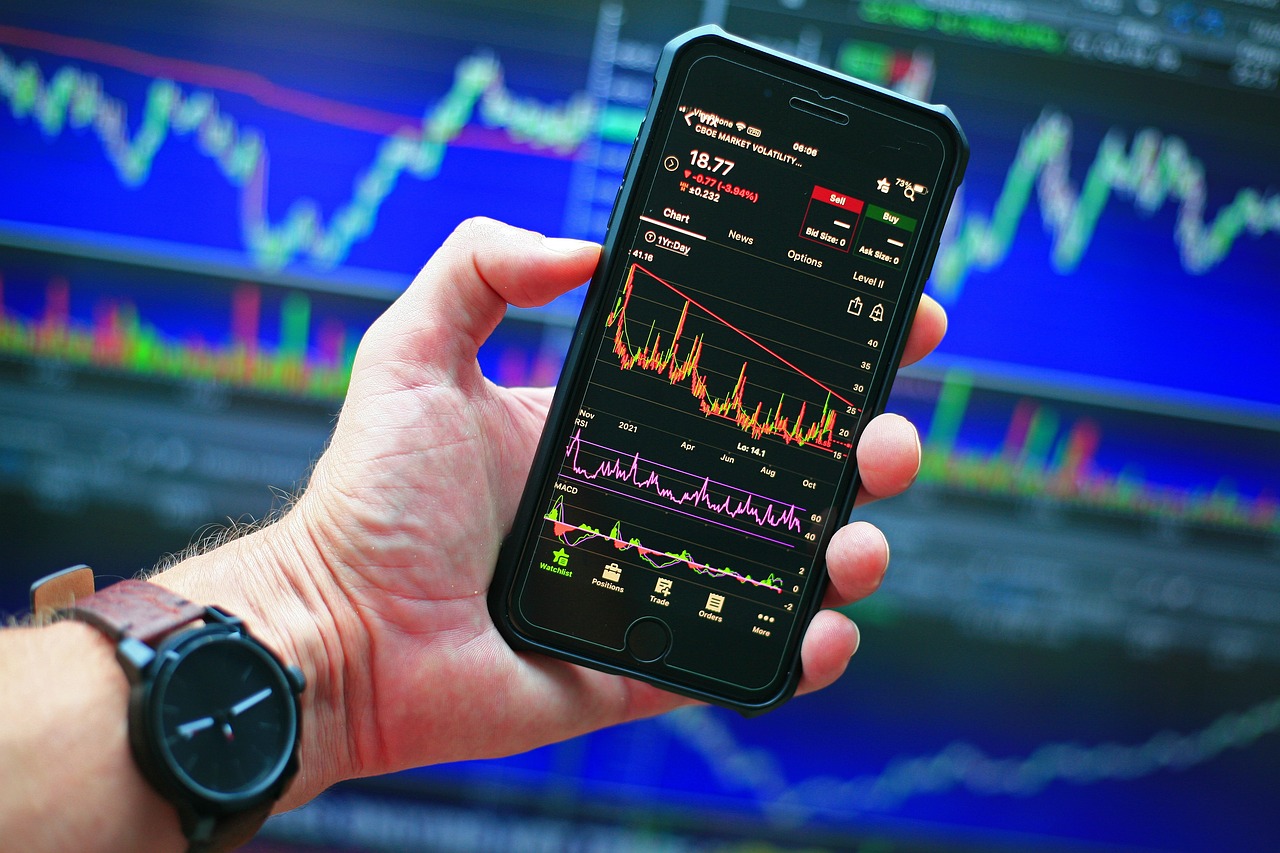
Data Quality Issues
When it comes to predictive trading models, the phrase "garbage in, garbage out" couldn't be more accurate. The quality of data used in these models is not just important; it is absolutely critical. Poor-quality data can lead to inaccurate predictions, which can, in turn, result in significant financial losses. Imagine trying to navigate a ship through foggy waters without a reliable map—this is what trading with low-quality data feels like.
There are several factors that can compromise data quality, including:
- Inaccurate Data Entry: Human errors during data entry can introduce inaccuracies that skew the results of predictive models.
- Missing Data: Gaps in data can lead to incomplete analyses, making it difficult for algorithms to identify trends.
- Outdated Information: Financial markets are dynamic, and relying on outdated data can result in decisions based on past conditions that no longer apply.
- Inconsistent Formats: Data collected from different sources may come in various formats, complicating analysis and integration.
To mitigate these issues, traders and data scientists must implement robust data management practices. These practices include regular audits of data sources, employing automated data collection tools to minimize human error, and utilizing data normalization techniques to ensure consistency across datasets. By addressing data quality issues proactively, traders can enhance the reliability of their predictive models and make more informed decisions.
Moreover, the implications of poor-quality data extend beyond just inaccurate predictions. They can also lead to a lack of trust in AI systems among traders and investors. If the data being fed into these sophisticated algorithms is flawed, how can anyone expect the outcomes to be reliable? This trust is paramount in the financial sector, where decisions can have far-reaching consequences.
In summary, ensuring high data quality is not merely a technical requirement; it is a foundational element that underpins the success of AI-driven predictive trading models. As the saying goes, "a strong foundation leads to a stable structure." The financial landscape is ever-evolving, and the ability to adapt to these changes hinges on the accuracy and reliability of the data that informs trading strategies.
- What is data quality in predictive trading? Data quality refers to the accuracy, completeness, and reliability of the data used in trading models. High-quality data is essential for making informed trading decisions.
- How can poor data quality affect trading outcomes? Poor data quality can lead to inaccurate predictions, resulting in financial losses and a lack of trust in AI systems.
- What are some common data quality issues? Common issues include inaccurate data entry, missing data, outdated information, and inconsistent formats.
- How can traders ensure data quality? Traders can ensure data quality by conducting regular audits, using automated data collection tools, and applying data normalization techniques.

Regulatory Compliance
In the fast-paced world of trading, is not just a box to check; it’s a critical component that can make or break a trading strategy. As artificial intelligence continues to integrate into trading models, the regulatory landscape evolves simultaneously. Traders and financial institutions must navigate a complex web of regulations designed to protect investors and maintain market integrity. This means understanding the legal frameworks that govern trading practices and ensuring that AI systems operate within these boundaries.
One of the primary challenges in achieving compliance is the sheer volume of regulations that vary by region, market, and asset class. For instance, the European Union has its own set of stringent regulations under the Markets in Financial Instruments Directive (MiFID II), while the United States follows guidelines set forth by the Securities and Exchange Commission (SEC). These regulations often dictate how data can be collected, processed, and utilized, especially when it comes to AI algorithms that analyze trading patterns and behaviors.
Moreover, compliance isn’t just about adhering to existing laws; it also involves anticipating future regulations. As AI technologies evolve, regulators are increasingly focused on issues such as transparency, accountability, and fairness in algorithmic trading. This necessitates that traders not only implement AI solutions but also provide clear documentation on how these systems make decisions. In essence, traders must be prepared to explain the logic behind their AI models, which can be a daunting task given the complexity of these algorithms.
To help navigate these challenges, many firms are investing in compliance technology, often referred to as RegTech. These tools leverage AI themselves to monitor trading activities, ensuring adherence to regulations in real-time. For example, RegTech solutions can analyze trading data to flag suspicious activities that might indicate market manipulation or insider trading. This proactive approach not only helps in maintaining compliance but also fosters trust with regulators and investors alike.
It's also important to highlight that non-compliance can lead to severe penalties, including hefty fines and reputational damage. For instance, a well-known trading firm faced a multi-million dollar fine for failing to comply with data protection regulations. This incident serves as a cautionary tale for traders looking to integrate AI into their strategies without a solid understanding of regulatory requirements.
In summary, regulatory compliance in AI-driven trading is a multifaceted challenge that requires continuous education, investment in technology, and a proactive approach to understanding the legal landscape. As we look to the future, it’s clear that staying ahead of regulatory changes will be essential for any trader looking to harness the power of artificial intelligence responsibly.
- What is regulatory compliance in trading? Regulatory compliance in trading refers to the adherence to laws and regulations that govern financial markets, ensuring that trading practices are legal and ethical.
- Why is regulatory compliance important for AI in trading? It is crucial because non-compliance can lead to significant penalties, including fines and reputational damage. Additionally, it helps build trust with regulators and clients.
- What are some common regulations affecting AI in trading? Common regulations include the MiFID II in Europe and SEC guidelines in the U.S., which dictate how data can be used and the transparency required for algorithmic trading.
- How can traders ensure compliance when using AI? Traders can ensure compliance by investing in RegTech solutions, staying informed about regulatory changes, and maintaining thorough documentation of their AI models and decision-making processes.

The Future of AI in Trading
The future of AI in trading is not just bright; it's practically glowing with potential! As technology continues to advance at a breakneck pace, the financial landscape is set to undergo a seismic shift. Imagine a world where trading decisions are made with pinpoint accuracy, leveraging the immense power of artificial intelligence. This isn't science fiction; it's happening right now, and it's only going to get better. With AI's ability to analyze vast amounts of data in real time, traders can expect to see more informed decisions that could lead to higher profits and reduced risks.
One of the most exciting prospects is the integration of AI with blockchain technology. This combination could revolutionize trading by enhancing transparency and security. Picture this: a trading environment where every transaction is recorded on a decentralized ledger, verified by AI algorithms that ensure compliance and accuracy. This synergy not only boosts trust among traders but also minimizes the chances of fraud. The potential for smart contracts powered by AI could automate trading processes, making transactions faster and more efficient than ever before.
Additionally, as AI continues to evolve, ethical considerations are becoming increasingly important. It's essential to ensure that the algorithms used in trading are not only effective but also fair. This means developing AI systems that are transparent and accountable. Traders and firms will need to prioritize ethical practices to maintain trust in AI-driven models. After all, with great power comes great responsibility, and the financial sector must navigate these waters carefully to avoid pitfalls.
Moreover, we can expect to see AI-driven predictive models becoming more sophisticated. These models will not only analyze historical data but also incorporate real-time market sentiment, news articles, and social media trends. By doing so, they will provide a more holistic view of market dynamics, allowing traders to act swiftly on emerging opportunities. Imagine receiving alerts about potential market shifts before they happen, giving you the upper hand in your trading strategy!
As we look ahead, it’s crucial to remain adaptable. The trading landscape is changing rapidly, and those who embrace AI technologies will likely lead the charge. Companies that invest in AI capabilities will have the competitive edge, as they harness the power of data to drive their trading strategies. The future of trading is not just about making profits; it's about making smarter, more informed decisions that can withstand the test of time.
- What is the role of AI in trading? AI enhances trading by analyzing large datasets to identify patterns and trends, leading to more informed trading decisions.
- How does AI improve predictive trading models? AI uses machine learning algorithms to analyze historical and real-time data, improving the accuracy of predictions.
- What challenges does AI face in trading? Common challenges include data quality issues, regulatory compliance, and the need for ethical considerations.
- Will AI replace human traders? While AI can augment trading strategies, the human element remains crucial for decision-making and understanding market nuances.

Integration with Blockchain Technology
As we venture deeper into the digital age, the integration of AI with blockchain technology is becoming a hot topic in the financial sector. Imagine a world where trading is not only efficient but also secure and transparent. This synergy between AI and blockchain has the potential to revolutionize how we approach trading, offering unprecedented advantages. But how exactly does this integration work, and what benefits does it bring?
First, let’s break down the fundamentals. Blockchain is a decentralized ledger technology that allows for the recording of transactions in a secure and transparent manner. When we combine this with AI, which excels at processing vast amounts of data and identifying patterns, we create a robust framework for predictive trading. The result? A system that not only predicts market trends but also ensures the integrity of the data being used.
One of the most significant benefits of integrating AI with blockchain is enhanced transparency. In traditional trading systems, data can be manipulated or misrepresented, leading to losses and mistrust. However, with blockchain’s immutable ledger, every transaction is recorded and can be traced back to its origin. This level of transparency builds trust among traders and investors, as they can verify the accuracy of the data supporting AI predictions.
Moreover, the integration allows for improved security. Cybersecurity is a major concern in trading, with hackers constantly seeking vulnerabilities to exploit. Blockchain technology offers a decentralized approach, making it significantly harder for malicious actors to compromise the system. When AI algorithms are trained on secure, blockchain-stored data, the risk of data breaches decreases, leading to safer trading environments.
Another exciting aspect is the potential for real-time analytics. AI can process and analyze data at lightning speed, while blockchain ensures that the data is up-to-date and reliable. This combination allows traders to make informed decisions almost instantaneously, adapting to market changes as they happen. Imagine being able to react to market fluctuations within seconds, all thanks to the seamless integration of these two technologies!
Finally, the integration of AI and blockchain can pave the way for innovative trading models, such as smart contracts. These self-executing contracts with the terms of the agreement directly written into code can automate various trading processes. For example, a smart contract could automatically execute a trade when certain conditions are met, reducing the need for manual intervention and minimizing human error.
In summary, the integration of AI with blockchain technology is not just a futuristic concept; it's a reality that is already beginning to reshape the trading landscape. By enhancing transparency, security, and efficiency, this powerful combination promises to create a more reliable and dynamic trading environment. As we look ahead, it’s clear that the future of trading is not only bright but also incredibly exciting!
- What is the main benefit of integrating AI with blockchain in trading? The primary benefit is enhanced transparency and security, which leads to more reliable and efficient trading processes.
- How does blockchain improve data integrity in AI trading models? Blockchain creates an immutable ledger of transactions, ensuring that all data used for AI predictions is accurate and trustworthy.
- Can smart contracts fully automate trading? Yes, smart contracts can automate various trading processes, reducing the need for manual intervention and minimizing errors.
- What role does real-time analytics play in AI and blockchain integration? Real-time analytics allows traders to respond to market changes almost instantly, improving decision-making and trading outcomes.

Ethical Considerations
As we plunge deeper into the realm of artificial intelligence (AI) in trading, the surrounding its use become increasingly significant. With great power comes great responsibility, and the financial landscape is no exception. Traders and developers alike must grapple with the implications of deploying AI-driven models that can predict market trends, potentially influencing the livelihoods of countless individuals and businesses.
One of the most pressing ethical concerns is the transparency of AI algorithms. Many trading models operate as black boxes, where the decision-making process remains opaque even to their creators. This lack of transparency raises questions about accountability. If an AI-driven model makes a poor trading decision leading to significant financial losses, who is responsible? Is it the developer, the trader, or the AI itself? Establishing clear lines of responsibility is crucial to maintaining trust in these systems.
Another critical aspect is the potential for market manipulation. AI systems, particularly those employing high-frequency trading strategies, can execute trades at lightning speed, creating opportunities for unethical practices. For instance, algorithms could be designed to artificially inflate trading volumes or manipulate prices, which could mislead other traders and distort market dynamics. This possibility necessitates strict regulatory oversight to ensure fair trading practices.
Furthermore, the issue of data privacy cannot be overlooked. AI systems rely heavily on vast amounts of data, including personal and sensitive information. The collection, storage, and utilization of this data must adhere to ethical standards that respect individuals' privacy rights. Traders and organizations must implement robust data protection measures to prevent breaches and misuse, fostering a culture of ethical data stewardship.
Moreover, there is a risk of algorithmic bias. If the data used to train AI models is biased or unrepresentative, the predictions made by these models can perpetuate and even exacerbate existing inequalities in the market. For example, if a trading algorithm is primarily trained on data from a specific demographic, it may overlook opportunities or risks pertinent to other groups. To combat this, developers must ensure diverse and comprehensive datasets are utilized in training AI systems.
In light of these considerations, it is essential for stakeholders in the financial sector to prioritize ethical practices when implementing AI technologies. Establishing clear guidelines and frameworks can help mitigate risks and promote responsible usage. Here are some key principles to consider:
- Transparency: Ensure that AI algorithms are understandable and their decision-making processes are documented.
- Accountability: Clearly define who is responsible for AI-driven decisions and the outcomes they produce.
- Fairness: Actively work to eliminate bias in data and algorithms to promote equitable trading opportunities.
- Data Protection: Implement strict data privacy measures to safeguard personal information.
As we look to the future, the integration of ethical considerations in AI trading models will not only enhance trust among users but also contribute to a more stable and fair financial ecosystem. Ultimately, the goal should be to harness the power of AI while ensuring that it serves the greater good, balancing innovation with responsibility.
1. What are the primary ethical concerns regarding AI in trading?
The main ethical concerns include transparency of algorithms, accountability for decisions made by AI, potential for market manipulation, data privacy issues, and algorithmic bias.
2. How can traders ensure the ethical use of AI?
Traders can ensure ethical use by adhering to guidelines that promote transparency, accountability, fairness, and data protection when implementing AI technologies.
3. Why is transparency important in AI trading models?
Transparency is crucial as it builds trust among users and stakeholders, ensuring that the decision-making processes of AI systems are understandable and accountable.
4. What role does data privacy play in ethical AI trading?
Data privacy is vital as AI systems often rely on personal and sensitive data. Ethical practices must be in place to protect this information from breaches and misuse.
5. How can bias in AI algorithms be addressed?
Bias can be addressed by using diverse and comprehensive datasets for training AI models and continuously monitoring their outputs for fairness and equity.
Frequently Asked Questions
- What is predictive trading?
Predictive trading is a strategy that uses historical data and statistical algorithms to forecast future market trends. By analyzing past performance, traders can make informed decisions about buying and selling assets, enhancing their chances of success in the market.
- How does AI enhance predictive trading models?
AI enhances predictive trading models by processing vast amounts of data quickly and accurately. Machine learning algorithms can identify patterns and trends that may not be immediately apparent to human traders, leading to improved predictions and more efficient trading strategies.
- What are some common machine learning algorithms used in trading?
Common machine learning algorithms in trading include decision trees, support vector machines, and neural networks. Each of these algorithms has its strengths and can be used to identify trading opportunities based on historical data and market behavior.
- What is the difference between supervised and unsupervised learning?
Supervised learning involves training a model on labeled data, allowing it to make predictions based on known outcomes. In contrast, unsupervised learning analyzes unlabelled data to discover hidden patterns or groupings without prior knowledge of the outcomes.
- What are the benefits of using AI in trading?
The benefits of using AI in trading include enhanced decision-making through data-driven insights, improved accuracy in predictions, increased trading speed, and better risk management strategies. AI can help traders react faster to market changes and optimize their strategies.
- What challenges do traders face when implementing AI?
Traders often face challenges such as data quality issues, which can lead to inaccurate predictions, and regulatory compliance concerns, as AI trading must adhere to legal frameworks. Ensuring data integrity and staying updated with regulations are crucial for successful AI implementation.
- How might AI and blockchain technology work together in trading?
Integrating AI with blockchain technology could enhance trading by providing greater transparency and security. AI can analyze transactions on the blockchain in real-time, identifying trends and anomalies while ensuring that trades are executed in a secure and verifiable manner.
- What ethical considerations should be taken into account with AI trading?
Ethical considerations in AI trading include ensuring fairness, transparency, and accountability in decision-making processes. As AI systems become more autonomous, it is essential to address potential biases in algorithms and ensure that trading practices do not harm market integrity or consumer trust.







